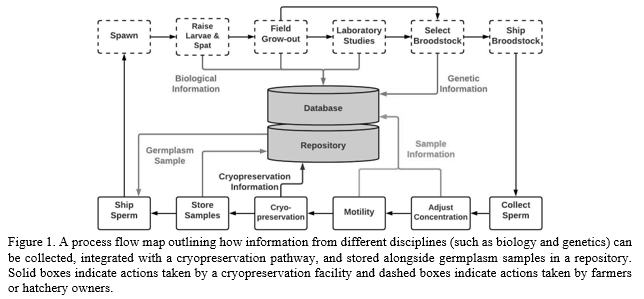USING GERMPLASM REPOSITORIES TO SUPPORT EASTERN OYSTER AQUACULTURE: TRACKING THE FLOW OF MATERIALS AND INFORMATION
Oyster aquaculture is an integral part of the economy and culture of Louisiana. H owever, many growers in the region are experiencing oyster mortality events, especially in the summer months. While the exact causes of these events remain unclear , scientific tools such as physiological studies, genetics research, breeding programs, and sperm cryopreservation can be used to address such problems . Unfortunately , information from across these disciplines has not been used collectively, decreasing potential contributions of each tool and their combination . Germplasm r epositories offer a solution. Repositories are collections of genetic material that benefit agriculture by storing physical genetic samples, such as sperm . They also stor e relevant information associated with the samples , such as biological or genetic data. Alt hough successful cryopreservation protocols for freezing oyster sperm (and other aquatic organisms ) exist, a comprehensive repository system does not yet exist for any aquatic species . To address this issue, this study used industrial engineering tools such as process flow mapping to integrate oyster cryopreservation protocols into a repository development pathway . The flow of informational components was also incorporated . The biological information of oyster populations from field studies and laboratory studies, sample information from individual oysters, and cryopreservation information were all integrated into the pathway (Figure 1). All cryopreserved sperm was stored in the USD A National Animal Germplasm Program (NAGP) repository and all associated information was recorded in the NAGP Animal- GRIN database. Additionally, process flow maps were paired with time study data gathered during oyster cryopreservation to generate simulations of the repository development process, which can serve as a model for other aquatic species .
